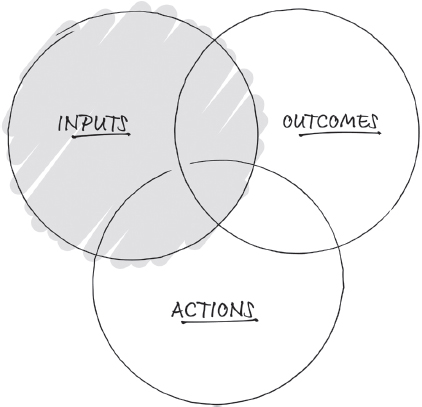PART II ORGANISE YOUR INPUTS

As discussed in Part I, work reaches us through many disparate channels, including email, meetings, interruptions, memos and phone calls. I call these inputs. An input is any communication, piece of information or potential action that lands in one of your ‘inboxes’. It is your job to assess these inputs and determine which are and which are not worth keeping, and which might need action and which don't.
The volume of information we are now required to review each day borders on the ridiculous. Sometimes hundreds of emails and alerts compete for our attention. Many of us have become conditioned to this and have fallen into the trap of thinking that it is our job to respond to every email instantly. It is not.
It is fair to say that emails are an important component of our work, but our inbox is not where our real priorities lie. I once heard the inbox aptly described as ‘an organising system for other people's priorities’.
In this part of the book we examine three core strategies for getting on top of this deluge. In chapter 4 we look at protecting your work day from non-essential emails — that is, inputs that do not actually help you to do your work or achieve your goals. In chapter 5 we focus on ways to organise your emails simply to minimise effort and maximise ease of retrieval. Finally, in chapter 6, I offer a framework that will help you ...
Get Smart Work now with the O’Reilly learning platform.
O’Reilly members experience books, live events, courses curated by job role, and more from O’Reilly and nearly 200 top publishers.

